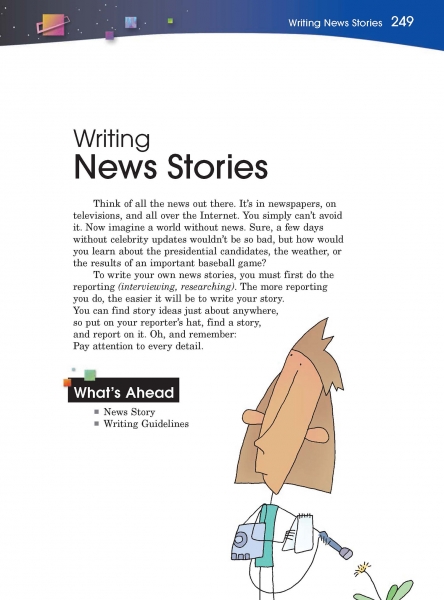Page 249 from

Start-Up Activity
Ask a student volunteer to go to the window and report to the class on what is happening outside your classroom. Have the person try to make the news story interesting and engaging. Then send a different volunteer to step into the hallway and report to the class on what is happening there.
Point out that reporters first go, experience, observe, and interview to gather information. Then they write up what they have discovered. They allow those of us who weren't there to understand what happened. Because of news stories, we can observe what is happening far and wide.
Tell students this chapter will help them become reporters and write their own news stories.
Think About It
“Being a reporter seems a ticket out to the world.”
—Jackie Kennedy

Start-Up Activity
Ask a student volunteer to go to the window and report to the class on what is happening outside your classroom. Have the person try to make the news story interesting and engaging. Then send a different volunteer to step into the hallway and report to the class on what is happening there.
Point out that reporters first go, experience, observe, and interview to gather information. Then they write up what they have discovered. They allow those of us who weren't there to understand what happened. Because of news stories, we can observe what is happening far and wide.
Tell students this chapter will help them become reporters and write their own news stories.
Think About It
“Being a reporter seems a ticket out to the world.”
—Jackie Kennedy
